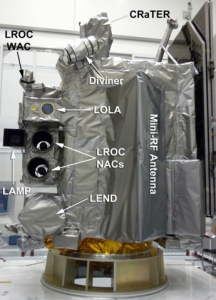The Earth’s Moon: Using LRO Data to Learn About Lunar Geology and Geological History
The geology of the Earth is constantly changing (i.e. tectonic plates shifting etc.). By comparing geological components of the Earth and Moon’s cores, we discover they contain similar elements, leading us back to the formation of these planets in our solar system. The Lunar Reconnaissance Orbiter is an example of how we are constantly updating our findings and learning new things when it comes to astronomy. Data collected from the LRO suggested that “the Moon has undergone relatively recent geological activity.”1 There is little attention paid to the geological history and composition of our Moon. Our group wishes to learn a bit more about the geological makeup of the
Moon, as well as the geological events that shaped it. Using data collected from the LRO we can begin to connect the dots between certain geological components found in the Moon and past historical events that occurred in our solar system, thus affecting the formation of the Moon.
We will explore the details of the LRO, the purpose of the mission, and how the data it collected improves our knowledge of the Moon today, we can begin. Next, we will cover the general geological composition of the Moon and certain unique features found on the Moon. Finally, we will aim to connect the geological history of the Moon to data collected by the LRO on the geological makeup of the Moon.
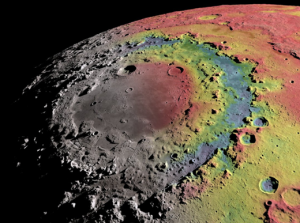
Figure 1: Picture taken by LRO mapping lunar terrain. NASA Scientific Visualization Studio. https://svs.gsfc.nasa.gov/4499
What is the Lunar Reconnaissance Orbiter?
The primary focus of the creation of the Lunar Reconnaissance Orbiter was to create more analysis for future exploration of the moon. The LRO was launched by NASA in June 2009. The Lunar Reconnaissance Orbiter mission had eight goals to complete on the moon. They were to find possible landing sites, map and observe regions of interest to create high-resolution images, develop a deeper understanding of mineralogical components of the Moon, and characterize and determine specific lunar geological components2.
Within the Lunar Reconnaissance Orbiter, there are seven instruments that were created to better bring knowledge to our moon’s geology. Each of these instruments creates the overall function to the LRO, yet within each of these instruments, their primary functions bring an overall wealth of information from the moon alone. Within the creation of each instrument, they released them as a project within themselves, having the LRO as the overarching instrument for us to better see the moon. The instruments give the availability for the goals stated above to be completed. These seven instruments are “The CRaTER (The Cosmic Ray Telescope for the Effects of Radiation), The LAMP (Diviner Lunar Radiometer Experiment), The LEND (Lunar Exploration Neutron Detector, The LOLA (Lunar Orbiter Laser Altimeter), The LROC (The Lunar Reconnaissance Camera), The Mini-RF (The Miniature Radio Frequency).
All these features of the Lunar Reconnaissance Orbiter conduct a better ov
erall picture of the moon. Every day these instruments send tons of data back to the NASA Planetary Data System to study. One of these interesting features that help us see the Geological Composition of the moon that would not have been capable if we did not have the LRO is the fact that we can see permanently shadowed regions of the moon. This is made possible through the camera (LROC)3. The exploration of the LRO has given the capability for people who are not studying the moon and space as their career to look at the moon and the composition of the moon from home on their computers. Systems like Lunarserv Global Explorer do this; it is a lunar mapping service that gives us the ability to zoom in on the moon and observe the crust of the moon and see exactly what one of the instruments (the LROC) can really do.
The Geological Composition of the Moon
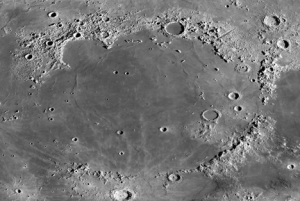
Figure 3: Mosaic of Mare Imbrium. NASA LRO Wide Angle Camera. https://en.wikipedia.org/wiki/Mare_Imbrium#/media/File:Mare_Imbrium_(LRO).png
The first rocks brought back by Apollo 11 were basalts, which are formed under volcanic activity proving that the Moon had a molten surface. After the Apollo programs when many more moon rocks were brought back, scientists were able to determine that the moon is composed of olivine, pyroxene and, plagioclase feldspar. Plagioclase is found closer to the crust, whereas olivine and pyroxene are close to the lunar mantle. Visible dark regions on the Moon are called maria which are formations comprised mostly of basalt; higher lands consist of low iron levels and calcium-rich Plagioclase. All mountains or highlands created on the surface are by vast amounts of meteorite impact,and without an atmosphere, there are no winds to corrode away at the rock leaving large structures incredibly tall5.
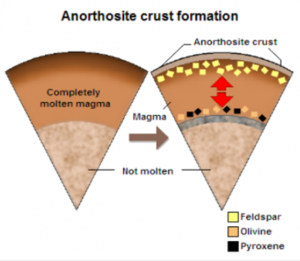
Figure 4: Anorthosite Crust Formation. GeologyIn. http://www.geologyin.com/2014/12/geology-of-moon.html
The Far Side of the Moon’s surface has minimal surface contrast compared to the landlocked lunar face; around 4.4 billion years ago to 4.3 billion years ago while the young Moon’s surface was molten, gravitational effects – the exact ones that create tidal influences here on Earth – pulled and warped the molten rock structure which evidently solidified due to the sub-zero temperatures in the vacuum of space. Which in return gave the Moon its famous face and giving it the slight bulge facing Earth6.
Apart from why it is not as discolored, we don’t know much about the far side of the Moon. There are not many missions that have explored this side of the Moon, therefore, leaving us with not much information about what else could have been deposited there from the constant onslaught from space junk. Many countries, however, are working towards this and
China, for example has launched many missions to the moon, mainly all regarding the visible side of the moon. However, in December 2018, China will be launching their Chang’e 4spacecraft to explore the far side of the Moon specifically – creating a way to finally study the far sides geological composition and more7.
The Geological History of the Moon
The first event that triggered the beginning of the formation of our Moon occurred approximately 9.2 billion years after the Big Bang, and that event was the formation of planetesimals, which form when a nebula crashes into an existing star. The definition of a nebula is a cloud of gas and dust in outer space. Next, planetesimals began to come together and form an individual planet. The definition of a planetesimal is a body that has come together with many others under gravitation to form an individual planet. A giant impact then occurred, when many small planets began colliding with one another to form the planets in our solar system today. The smaller planet formed by planetesimals, and a smaller piece of Earth itself combined to form our Moon.
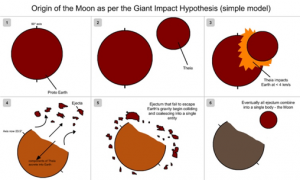
Figure 5: How the Moon was formed according to the Giant Impact Hypothesis. Jatan Mehta. https://www.flickr.com/photos/uncertainquark/42533208134
It was from this collision that tells researchers why the Earth and the Moon have similar chemical makeups. Lastly came lunar bombardment, asteroids struck the Moon and left craters and lunar plains, which one can see by looking at the Moon from Earth today9.
This timeline of astronomical events which formed the Moon contains pieces of history which we can research today to learn more about the Moon, the Earth, and our solar system in general. For example, by studying the effects of lunar bombardment on the Moon we notice there is a noticeably greater number of craters on the lunar highlands compared to the maria10is because during formation “rocky debris rained down on the surface of the young Moon”11, thus forming the lunar highlands. Lunar highlands are the lighter surface of the Moon, whereas lunar maria is the darker region of the Moon, also called seas. The lunar maria were formed shortly after as the “rocky rain” was ending, when lava flowed into the craters formed by colliding asteroids.
The collection of data by the LRO is useful in connecting past geological events to what we see on the surface, as well as in the Moon’s core, today. For example, a press release from February 2nd, 2012 stated that updated images from the LRO show the stretching of the lunar crust which resulted in the formation of valleys in certain areas of the lunar surface12. Though these events actually occurred approximately 50 million years ago, this is relatively recent activity for the Moon. Without this lunar endeavor by NASA, we would not have been able to learn about this geological event.
Another example of a geological component of the Moon that teaches us about its geological history and formation is the Moon’s core. The core on the far side of the Moon is “48km thicker than that of the near side”13. This is believed to have happened when the two individual bodies, one being Theia, a planetesimal, and the other being Earth, collided to form the Moon. Since both of these bodies would have had different core makeup, it makes sense that today we would believe that the impact of these two is what caused the near and far sides of the Moon to have differing core sizes.
Overall, we can conclude that the collection of data gathered by the LRO can indeed improve our knowledge of lunar geology. At the very least we have seen how one event, the stretching of the Moon’s crust, can be detected by the LRO. Had it not been for the LRO mission, we may have never known this event occurred. It is because of missions such as the LRO that we are still learning about the early formation of the Moon, even 4.55 billion years later.
Conclusion
Overall, though the LRO may not be able to answer all of our questions about lunar geology, it can begin to connect important pieces of history to lunar surface elements. It helps the everyday person to take a closer, more scientific look at lunar geology and geological history.
References
2NASA.LROC Objectives. http://lroc.sese.asu.edu/about/objectives
(19 October 2018).
3 NASA.Mapping Tools, Data Products, & Mosaics. http://lroc.sese.asu.edu/archive. (21 October 2018).
4NASA Scientific Visualization Studio. Orientale Impact Basin for the Cover of Science. https://svs.gsfc.nasa.gov/4499. (21 October 2018).
5Geology In. Geology of Moon. https://svs.gsfc.nasa.gov/4499. (21 October 2018).
Geoff Gaherty (Starry Night Education). Best Time to See Moon Mountains in May is Now. https://www.space.com/21183-moon-mountains-observing-guide.html. (21 October 2018).
6Charles Q. Choi (Space.com Contributor). Far Side of the Moon Explained. (23 October 2018).
Vicram Rajagopalan et. al. An Introduction to Lunar Geology.https://www.lpi.usra.edu/exploration/education/hsResearch/presentations/2012_2013/LanghamCreek1.pdf. (23 October 2018).
7Mike Wall (Space.com Senior Writer). China Launches Relay Satellite for Mission to Moon’s Far Side. https://www.space.com/40646-china-queqiao-moon-relay-satellite-launch.html. (24 October 2018).
8NASA. LRO Mission Overview. https://www.nasa.gov/mission_pages/LRO/overview/index.html. (24 October 2018).
9 Karl Tate (Infographics Artist). How the Moon was Made: Lunar Evolution Explained (Infographic). https://www.space.com/25332-moon-formation-history-lunar-evolution-infographic.html. (24 October 2018).
10 National Earth Science Teachers Association. Lunar Geology. https://www.windows2universe.org/earth/moon1.html. (24 October 2018).
11 National Earth Science Teachers Association. The Moon’s Geological History. https://www.windows2universe.org/earth/moon2.html. (24 October 2018).
12NASA. NASA Spacecraft Reveals Recent Geological Activity on the Moon. https://www.nasa.gov/mission_pages/LRO/news/lunar-graben.html. (24 October 2018).
13 Wikipedia. Moon.https://en.wikipedia.org/wiki/Moon#Formation. (24 October 2018).
